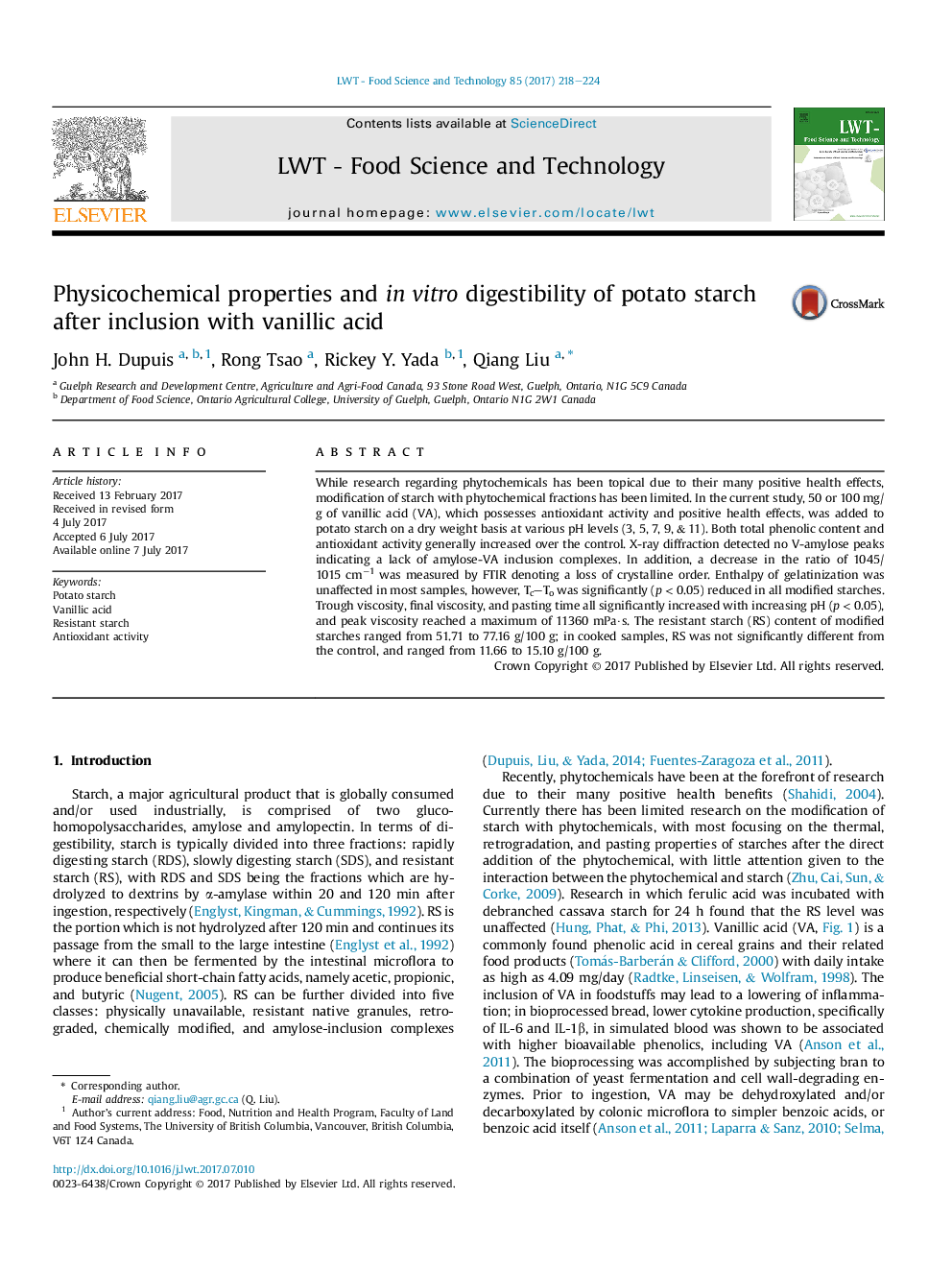| Article ID | Journal | Published Year | Pages | File Type |
|---|---|---|---|---|
| 5768453 | LWT - Food Science and Technology | 2017 | 7 Pages |
â¢Effect of vanillic acid (VA) concentration on potato starch modification was examined.â¢Antioxidant content increased with pH; inverse trend seen in antioxidant activity.â¢Treatment of starch with 100 mg/g VA led to more dramatic changes in thermal properties.â¢Modification at pH 5 or 7 led to more pronounced changes to pasting properties.â¢VA treatment had no statistically positive impact on cooked resistant starch levels.
While research regarding phytochemicals has been topical due to their many positive health effects, modification of starch with phytochemical fractions has been limited. In the current study, 50 or 100 mg/g of vanillic acid (VA), which possesses antioxidant activity and positive health effects, was added to potato starch on a dry weight basis at various pH levels (3, 5, 7, 9, & 11). Both total phenolic content and antioxidant activity generally increased over the control. X-ray diffraction detected no V-amylose peaks indicating a lack of amylose-VA inclusion complexes. In addition, a decrease in the ratio of 1045/1015 cmâ1 was measured by FTIR denoting a loss of crystalline order. Enthalpy of gelatinization was unaffected in most samples, however, Tc-To was significantly (p < 0.05) reduced in all modified starches. Trough viscosity, final viscosity, and pasting time all significantly increased with increasing pH (p < 0.05), and peak viscosity reached a maximum of 11360 mPa·s. The resistant starch (RS) content of modified starches ranged from 51.71 to 77.16 g/100 g; in cooked samples, RS was not significantly different from the control, and ranged from 11.66 to 15.10 g/100 g.
